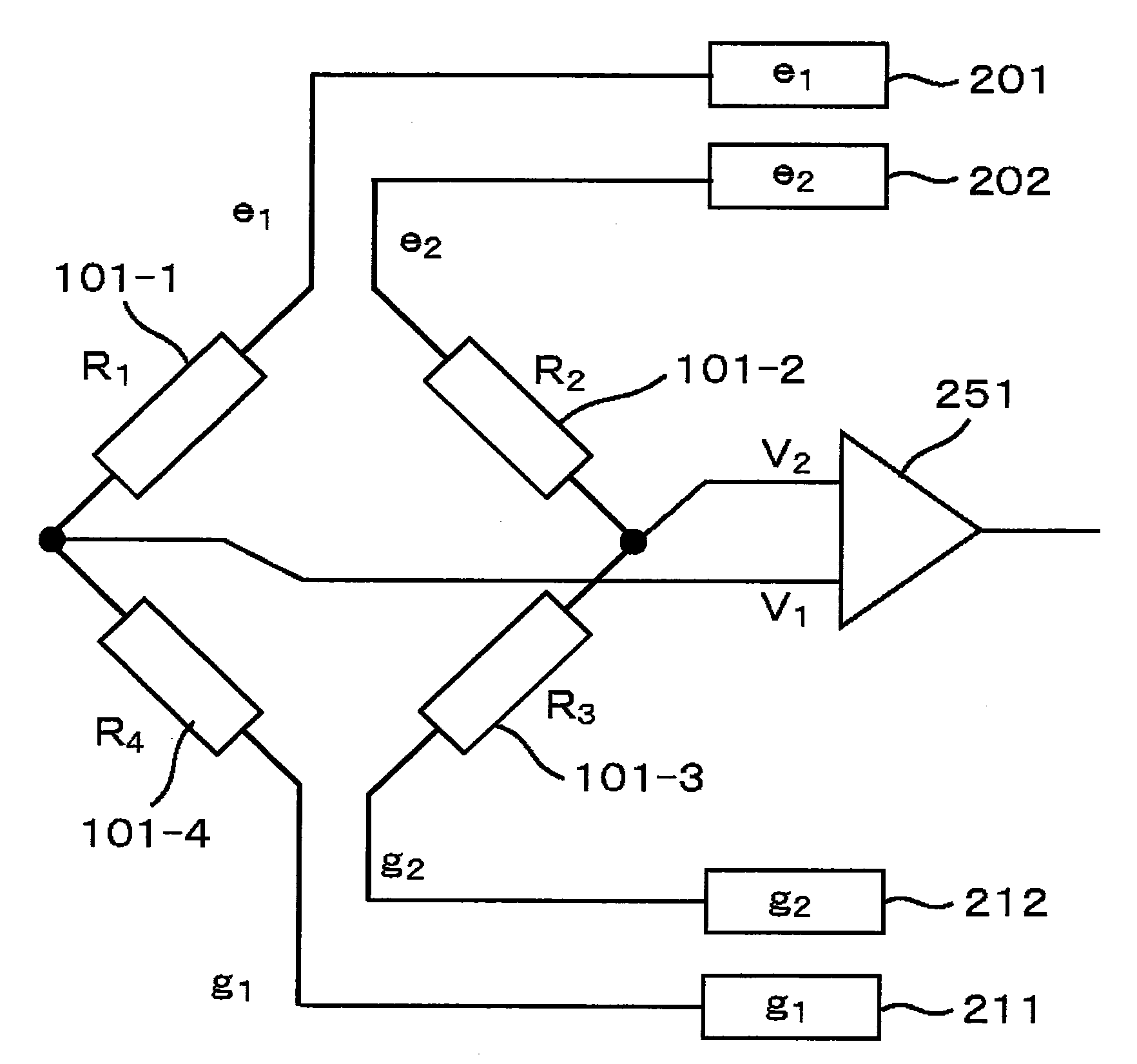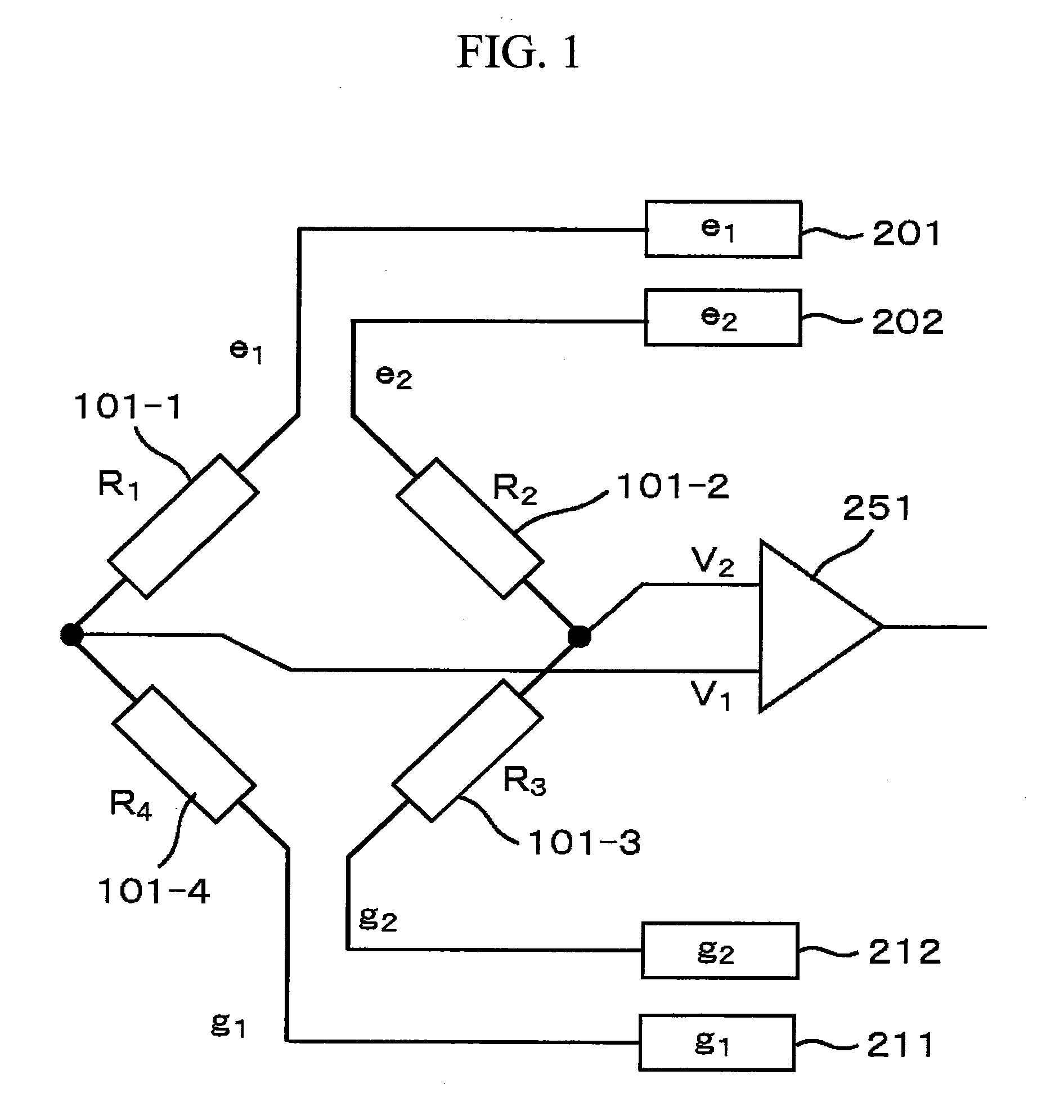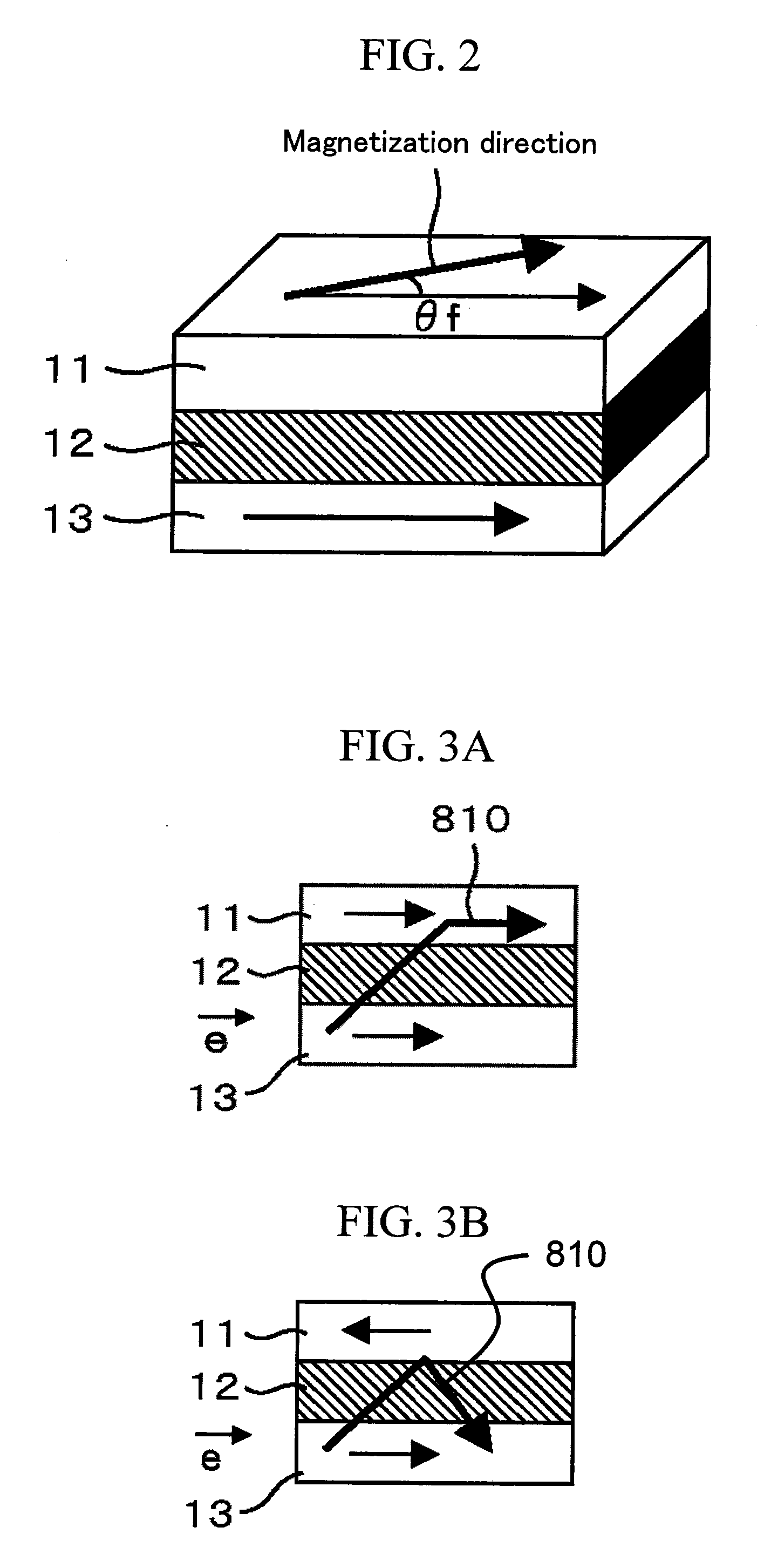Magnetic Field Detection Apparatus and Measurement Apparatus
a detection apparatus and magnetic field technology, applied in the field of magnetic field detection apparatus, can solve the problems of change in measurement errors, inability to meet v=0, so as to accurately measure the physical quantities of the environment, and accurately measure the direction of magnetic field.
- Summary
- Abstract
- Description
- Claims
- Application Information
AI Technical Summary
Benefits of technology
Problems solved by technology
Method used
Image
Examples
embodiment 1
[0110]FIG. 1 is a schematic diagram showing the configuration of a magnetic field detection apparatus of the first embodiment.
[0111]The magnetic field detection apparatus of the present embodiment includes four GMR elements 101-1, 101-2, 101-3, and 101-4. FIG. 1 shows a method of connecting such elements.
[0112]A half-bridge having the GMR elements 101-1 and 101-4 is connected to a positive-polarity output circuit e1(201) and a negative-polarity output circuit g1(211). A connection node of the GMR elements 101-1 and 101-4 is a signal terminal V1.
[0113]A half-bridge having the GMR elements 101-2 and 101-3 is connected to a positive-polarity output circuit e2(202) and a negative-polarity output circuit g2(212). A connection node of the GMR elements 101-2 and 101-3 is a signal terminal V2.
[0114]The signal terminal V1 and the signal terminal V2 are connected to a detection circuit (hereinafter also referred to as a “differential amplifier” or a “differential detector”) 251 which detects ...
embodiment 2
[0154]A rotation angle detection apparatus will now be described as a second embodiment of the present invention.
[0155]FIG. 6 is a schematic diagram showing the structure of the second embodiment of the present invention. A stator unit includes a flat-plate supporting unit 503 made of a non-magnetic material and a magnetic field detection apparatus 502 disposed on the upper surface of the supporting unit.
[0156]A rotor unit includes a rotation axis 504 made of a non-magnetic material and a magnet 505 integrally secured to the rotation axis. The rotation axis is rotatably supported by a stationary case (not shown) such that it faces the stator unit with a predetermined gap therebetween. The magnet 505 is a disk-shaped magnet made of ferrite or the like, and has an N pole and a S pole that are magnetized so as to form a uniform magnetic field 506 above the magnetic field detection apparatus 502 of the stator unit.
[0157]For the magnetic field detection apparatus 502, a magnetic field de...
embodiment 3
[0160]A rotation angle detection apparatus will now be described as the third embodiment of the present invention.
[0161]In the present embodiment, the rotation angle is detected using only a COS bridge. Although the structure of the present embodiment is similar to that shown in FIG. 6, the magnetic field detection apparatus 502 of FIG. 6 includes only a COS bridge. The COS bridge has the configuration described in Embodiment 1.
[0162]FIG. 7 schematically shows a view in which the output signal Δv(cos) of the COS bridge of the magnetic field detection apparatus 502 changes with the rotation angle θ. As seen from Formula 17, the Δv(cos) signal is proportional to cos θ, as depicted with the solid line in FIG. 7. A waveform of the dotted line in FIG. 7 schematically shows the waveform of an output signal at a different temperature. Although a signal proportional to cos θ is obtained, the amplitude differs. This is because the constant C of proportionality of Formula 17 changes with temp...
PUM
 Login to View More
Login to View More Abstract
Description
Claims
Application Information
 Login to View More
Login to View More - R&D
- Intellectual Property
- Life Sciences
- Materials
- Tech Scout
- Unparalleled Data Quality
- Higher Quality Content
- 60% Fewer Hallucinations
Browse by: Latest US Patents, China's latest patents, Technical Efficacy Thesaurus, Application Domain, Technology Topic, Popular Technical Reports.
© 2025 PatSnap. All rights reserved.Legal|Privacy policy|Modern Slavery Act Transparency Statement|Sitemap|About US| Contact US: help@patsnap.com



